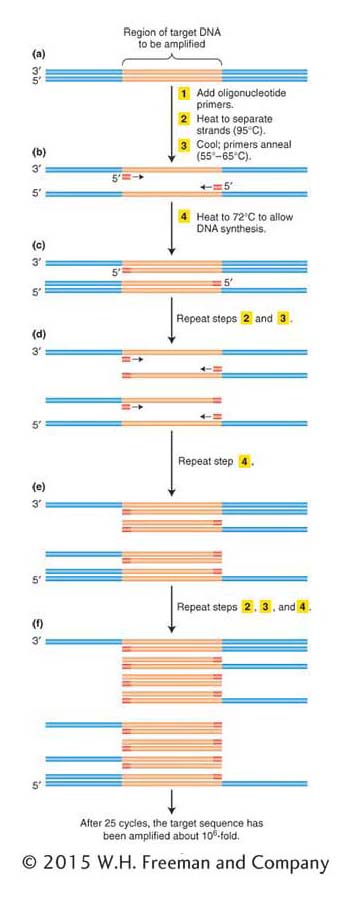Polymerase chain reaction

Figure 10-3: The polymerase chain reaction quickly copies a target DNA sequence. (a) Double- stranded DNA containing the target sequence. (b) Two chosen or synthesized primers have sequences complementing primer- binding sites at the 3′ ends of the target gene on the two strands. The strands are separated by heating, then cooled to allow the two primers to anneal to the primer- binding sites. Together, the primers thus flank the targeted sequence. (c) After the temperature is raised, Taq polymerase then synthesizes the first set of complementary strands by the addition of the four nucleotide triphosphates which are also in the reaction mixture. These first two strands are of varying length because they do not have a common stop signal. They extend beyond the ends of the target sequence as delineated by the primer- binding sites. (d) The two duplexes are heated again, exposing four binding sites. After cooling, the two primers again bind to their respective strands at the 3′ ends of the target region. (e) After the temperature is raised, Taq polymerase synthesizes four complementary strands. Although the template strands at this stage are variable in length, two of the four strands just synthesized from them are precisely the length of the target sequence desired. This precise length is achieved because each of these strands begins at the primer- binding site, at one end of the target sequence, and proceeds until it runs out of template, at the other end of the sequence. (f) The process is repeated for many cycles, each time creating more double- stranded DNA molecules identical with the target sequence.
ANIMATED ART: Polymerase chain reaction
[Leave] [Close]